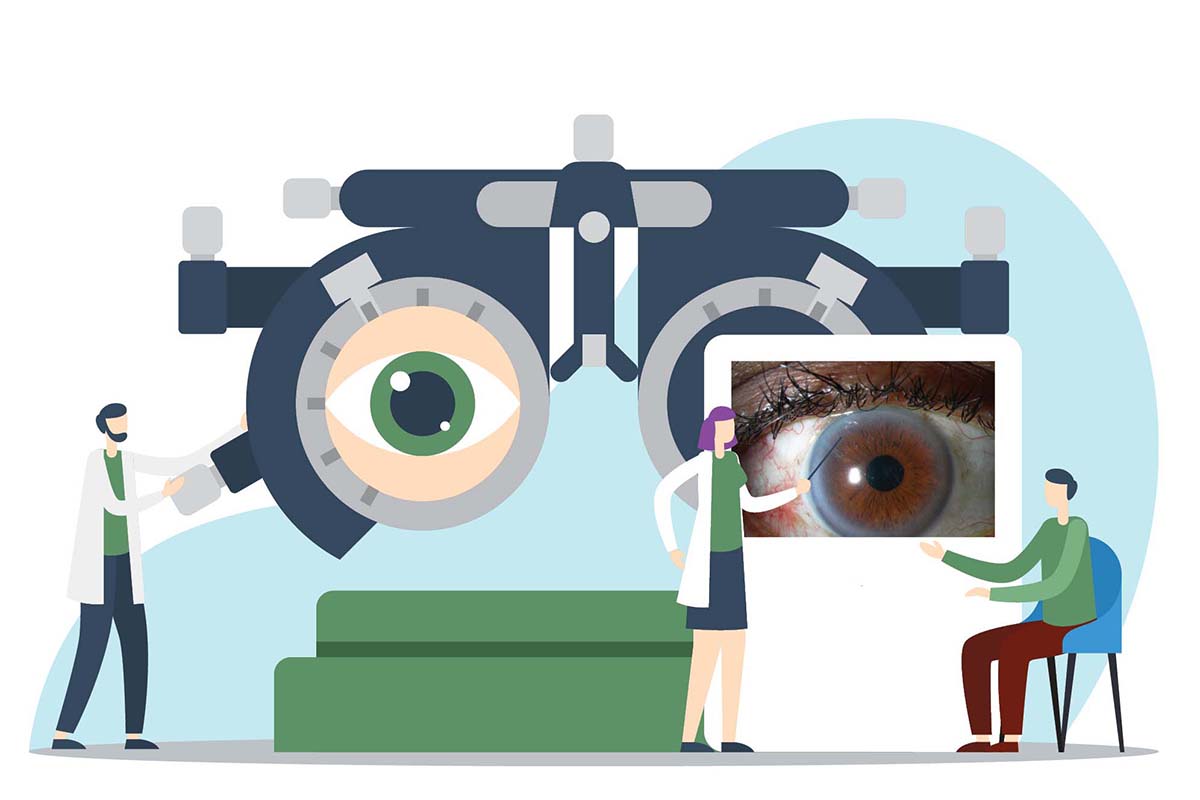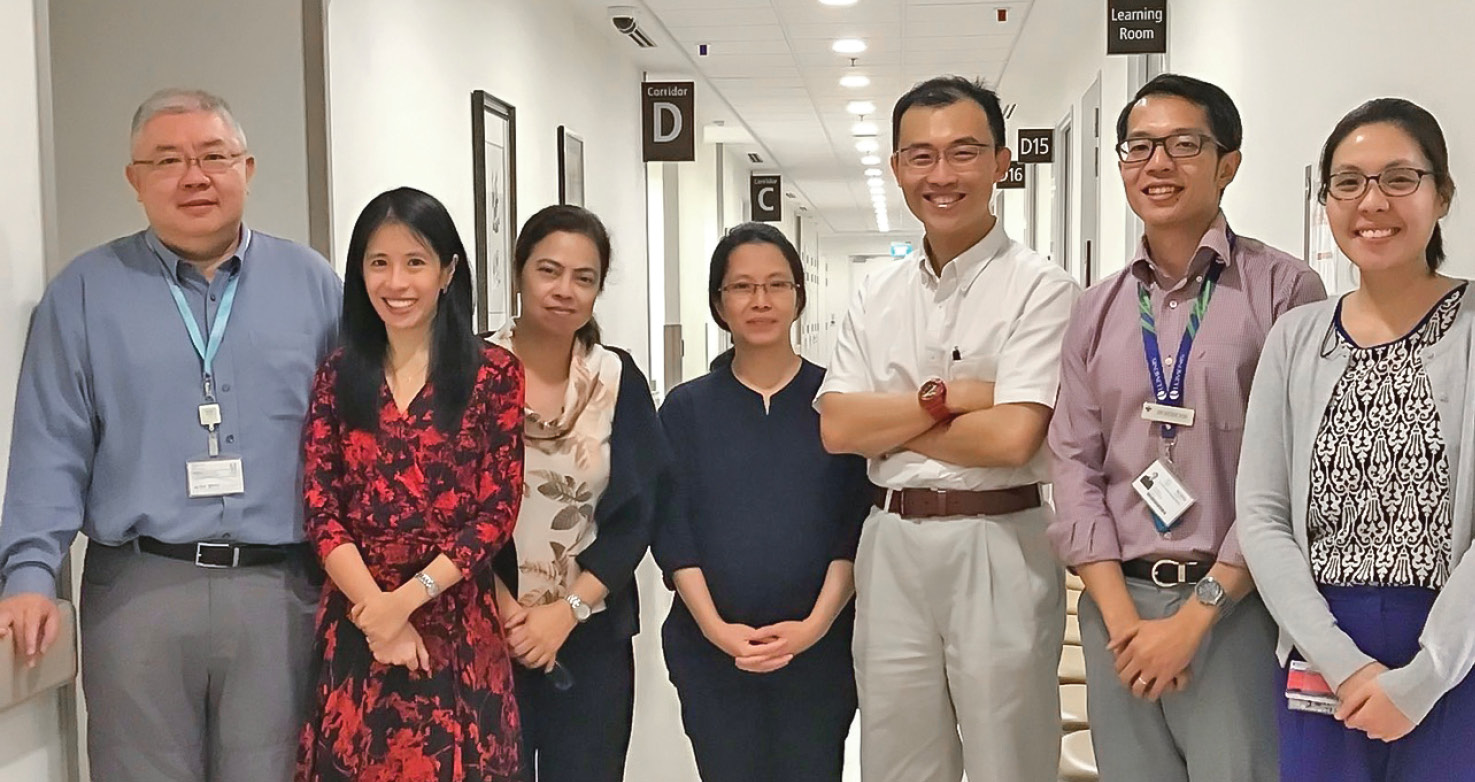
Issue 41 / February 2022
Science of Life
New Glaucoma Implant Reduces Eye Pressure and Preserves Vision

Glaucoma affects about 3-5% of the elderly population in Singapore, and the risk increases with age. The non-surgical treatment options available for most patients are medications to reduce pressure in the eye and laser trabeculoplasty, which targets the drainage angle of the eye
lthough the use of minimally invasive glaucoma surgery has become popular, many patients with advanced glaucoma or complex secondary glaucoma are not suitable for such procedures. In these circumstances, trabeculectomy is a reasonable option but it is effective largely in carefully selected patients without significant risk factors for surgical failure.
On the other hand, aqueous tube shunts have a much broader range of efficacy, working to some degree even in patients with the highest risk of failure. Choosing the appropriate treatments and tube shunts requires in-depth understanding of each patient’s condition and surgical requirements—tube shunt implants are versatile and effective for most types of glaucoma even in severe ones like refractory glaucoma.
A new glaucoma implant developed by a National University Health System team reduces patients’ eye pressure (also known as intraocular pressure, IOP) for a longer period of time and enables less reliance on eye drops. The Paul Glaucoma Implant (PGI) is a glaucoma drainage device which regulates IOP and prevents further progression of the disease that leads to blindness.
Glaucoma
affects about
3 to 5%
of the elderly
population in
Singapore
With a higher efficacy and safety profile in reducing IOP, this medical technology innovation advances the treatment of glaucoma. In patients with medically uncontrolled glaucoma, the PGI offers a viable option in the management of refractory glaucoma, a severe form of glaucoma that has a high risk of failure from conventional trabeculectomy surgery.
Led by Professor Paul Chew from NUS Medicine and Senior Consultant at the Department of Ophthalmology, National University Hospital (NUH), the research team involved in the development and design of the implant comprises Adjunct Associate Professor Chelvin Sng, Visiting Consultant from the Department of Ophthalmology, NUH, and Medical Director, Chelvin Sng Eye Centre, as well as researchers at the National University of Singapore.
“We designed this implant to give higher successful eye pressure control and consistent safety and efficacy. It is a more reliable device than current standard devices in use today. The ability to predictably manage severe glaucoma is the result of this new implant,” said Professor Chew.
Manufactured using medical grade silicone, the implant has two distinguishing features—a smaller tube calibre compared to other similar tube shunts, and an end-plate optimised to have a larger effective surface area. Co-inventor of the implant, Associate Professor Chelvin Sng, emphasised, “The implant has undergone rigorous safety and biocompatibility studies in the laboratory and in animal studies before being implanted in patients.”
A clinical trial with the PGI conducted in December 2017 to 2018 led by Associate Professor Victor Koh, Head, Department of Ophthalmology in NUS Medicine and NUH, has shown that surgery with the implant has successfully reduced the eye pressure in 93% of its participants after a one-year follow up.
The results also suggested that it is effective, safe and the dependency on anti-glaucoma eye drops after surgery is much less compared to published reports for other implants. The results of the trial were published in Ophthalmology Glaucoma on 11 May 2020 and 74 patients from Singapore, United Kingdom, Thailand, Hong Kong and Malaysia were recruited for follow-ups.
“The clinical outcomes from the multi-centre study validated the novel design of the PGI. Compared to published outcomes of other glaucoma tube shunts, the study suggests that the PGI is able to optimise eye pressures for refractory glaucoma with lower dependency on anti-glaucoma eye drops,” said Associate Professor Victor Koh.
The implant is licensed to a start-up company Advanced Ophthalmic Innovations Pte Ltd (AOI) and has been used for glaucoma treatments in Singapore, Europe, South Africa, Middle East, and Asia-Pacific. The innovation team received the Conformitè Europëenne (CE) Mark and Health Sciences Authority (HSA) approval for the Paul® Glaucoma Implant in 2017, and Therapeutic Goods Administration (TGA) certification was obtained in 2018. AOI recently commenced clinical trials in China in order to secure the National Medical Products Administration (NMPA) approval for clinical sales in China. Further, AOI also plans to undertake the US Food and Drug Administration regulatory filing soon. Patents were granted in the US, China, Singapore, and Japan.

The team behind the Paul Glaucoma Implant. Image was taken before implementation of COVID-19 safety measures.
The implants are now used by leading hospitals and established eye centres in the United Kingdom, Ireland, Germany, Holland, Finland, Italy, Portugal, France, Spain, Belgium, Saudi Arabia, South Africa, South Korea, Malaysia, Australia and New Zealand as well as the National University Hospital.
“An important aim that we have achieved with the PGI is to design a shunt that is less invasive inside the eye, with its much smaller tube than conventional implants, without compromising efficacy across the spectrum of recalcitrant glaucomas,” added Professor Keith Barton, a glaucoma specialist with Moorfields Eye Hospital in the United Kingdom and a visiting Professor with NUS Medicine. He was also involved in the design phase of the PGI.
Professor Lee Tian Tee, a Singaporean music professor at the Sichuan Conservatory of Music, received the implants at the National University Hospital in 2018 and 2019. “I had gone for an eye check-up in 2016 to seek help for my cataract. It was then that I found out that I was also suffering from glaucoma. After a detailed assessment with Prof Chew, who was my eye doctor, I received the PGI on both eyes. It has substantially relieved the pressure in my eyes without the need for any eye drop medication.”




